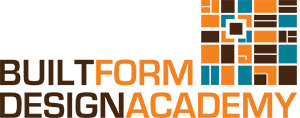TS: Thank you for agreeing to do the interview. Let’s start with your work history. What were you doing before taking the course, and what motivated you to transition into drafting and building design?
Emily: I was a kinesiologist for 18 years, which is a completely different field. Kinesiology is an energy modality using muscle testing to work with stress, trauma, and emotional issues. I did a lot of work with kids. Then COVID happened, and I couldn’t continue in that environment. Around the same time, my husband’s father retired, and we inherited the family building company. It made sense to focus my energy on running the business, handling administration, invoicing, and quoting.
I thought about adding drafting to keep that element in-house. When we visit a job, we need plans. Currently, we send them out to someone else and hope they come back to us. Learning drafting seemed like a logical next step, and I’ve always been interested in it. I even drew the plans for our home 20 years ago and enjoyed graphics in school.
TS: What attracted you to Built Form Design Academy as the place to study?
Emily: Initially, I looked into TAFE, but the Queensland TAFE offered building and interior design as a combined course, which I wasn’t interested in. Plus, it was full-time, which I couldn’t manage. I started exploring online options and liked how your website explained the process of following a project from start to finish. That made sense to me.
TS: How has the course helped you in your work so far?
Emily: It’s still early days. The rules around what you can do with a Cert IV have changed since I started. I can draw for my husband, but I’d need the full diploma for broader work. The training has given me a strong foundation, but I’m considering next steps.
Teresa: What were the biggest challenges you faced while studying online?
Emily: Studying online was new to me, and I missed the group environment. The transition from working in a community setting to being home alone every day was tough. The 3D elements were challenging too—my brain was used to thinking in 2D. Moving to 3D required making decisions about materials, composition, and placement, which was overwhelming at first.
TS: Did you find any strategies that helped?
Emily: When, when you just started the design after Dark, which was late last year. One of the first things that you guys talked about was that the way that the course is designed. We’re going to submit an assessment and then get feedback and that’s how it’s designed.
That helped me so much because I’m a bit of a perfectionist so I didn’t like not ‘passing’ an assessment straight away.
I’ve never passed an assignment the first time. And like that whole mental game was really tricky for me.
And it’s like when you explained it, I was like, yeah, of course. Because that’s how it works for the client. Like you’re never gonna just nail it first time.
But I hadn’t. I hadn’t sort of put that together. And so I had struggled with that internally about, yeah, feeling like I’m not good enough all the time.
I think it’s a conditioning of our schooling system though!
Like everything is measured by you get one chance handed in, you’ve got to do your best and that’s it.
TS: Whereas we’re in an industry where that is not the case. When you work in isolation, it’s really hard to see any problems. If I’m working on a design project I’ll generally shoot something over to Vanessa and she’ll pick up things that I hadn’t even considered.
And the same the other way round, you know, it’s just a fresh set of eyes because when you’re looking at the same thing over and over again, you just can’t see the problems.
Add to that most students will be using this work for your portfolios in a lot of cases.
And anyone with the skill set that that you’re going to be working for, they’ll pick up any problems straight away.
So we can’t let you think oh, that’s good enough, because when you when you go to work, they’re going to want to know that you’ve had a reasonably rigorous kind of education.
It’s a common complaint, even (especially) at university,the whole ‘oh, you’re too tough on me and, why do you have to be so mean to me?’ The reality is that its the way the industry is.
In real life projects you’ve got to pick out the problems because once it gets to council, or if it gets to the builder and they’re building the wrong thing because you haven’t drawn it properly, that’s a bigger problem.
So what did you like most about online study?
Emily: I appreciated the flexibility and having a manual to refer back to. It’s great for someone like me who needs to revisit information repeatedly.
TS: You were enrolled in the course for quite a long time tell me a bit about how you ended up organising your time in order to allow you to finish the course?
Emily: It was a change in my mindset. I took a break over Christmas last year. And I just had to shift my mindset and a bit of sheer grit and I just make myself sit down and finish it. I knew I had been avoidant of it.
I think I was a bit stuck at a point and then I just couldn’t get myself to get there and, and make it happen. But yeah, it wasn’t course issue. It was just a me issue.
The ability to just defer for three months, that was something for me that just helped me immensely because it just literally just took the weight off my shoulders for a little bit and let me just have a breather from just feeling like I had this weight and pressure to finish.
I really did appreciate that that was available. And as well as being an online course that you could actually allow me to do that.
You sent out an email, I think it was mental health week or something, but you actually sent out an email asking how we were doing.
And it was that email that made me go, I’m not OK.
I’m actually not OK.
And so that started this whole process of me thinking, I actually need to take a break.
I need to sort some stuff out. I need to get some help.
And so even that email was I made a big difference and maybe it was just for me and I appreciate that.
TS: A few people did reach out during this time. Most didn’t even need anything. It was just knowing that that was there seemed to really help. So that’s kind of cool, and great to hear how it helped you out.
What’s next?
Emily: I did chat with Vanessa about what’s next as far as with training and we did talk about what’s included the diploma and what QLD requires and all that.
I feel like maybe next year I will just buy the program and start working. And just see how I go.
In the future I do I want to be able to draw for myself under my own name and but for the moment I’m happy just do work with the family building business.
But I’m also very excited about sort of jumping into it, nerve wracking at the same time.
Teresa: Until you do your first project. You’re lucky you’ve got that support network behind you.
Emily: We’re actually building on our property at the moment.
They’ve just done the footings, so we’re right at the start.
I’ll make sure I’m involved in the process, even for the footings.
TS: You should go there and take a look when they’ve dug the trench for the footings and have a look.
Then when they put the steel in and what does it look like on the drawings?
What has the engineer drawn? And how does it look in the ground?
That’s the sort of level of detail you should be looking out for?
That way the next time you see an engineering drawing that maybe looks a bit different, you can start thinking about what that means/ how it affects, your drawings.
TS: Stay in contact if you have any questions, please do not hesitate to give us a call.
From BFDA we would like to congratulate Emily on completing her Certificate IV in Residential Drafting and wish her all the best as she follows her passion for a career as a building designer.


